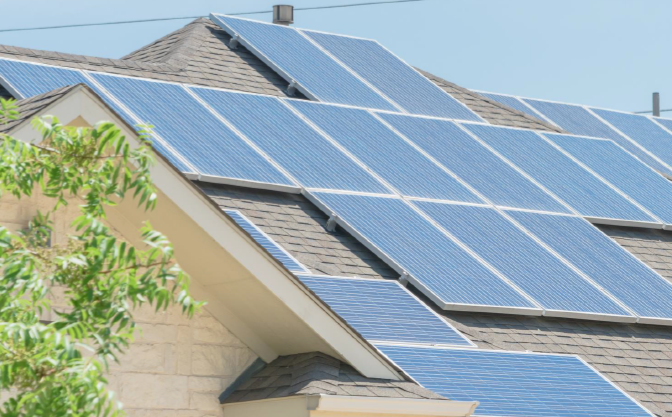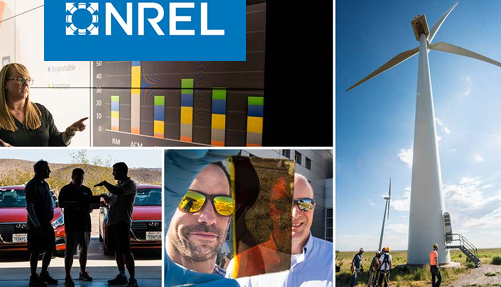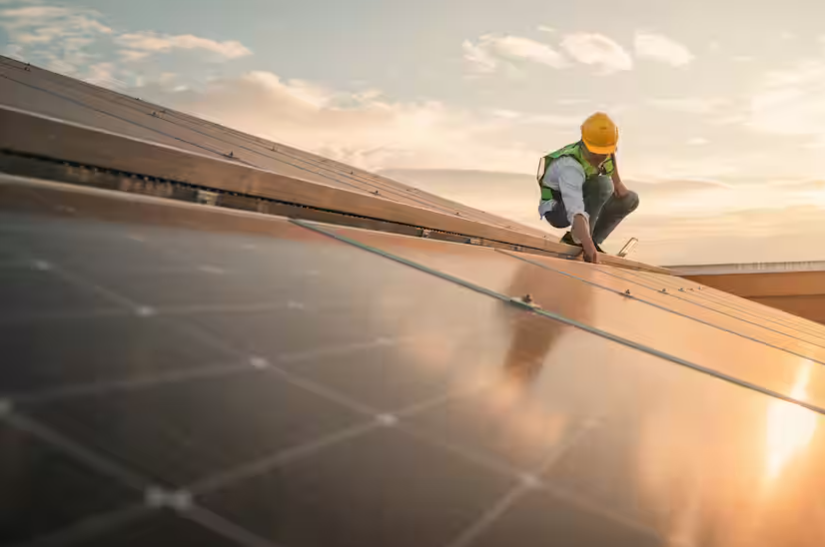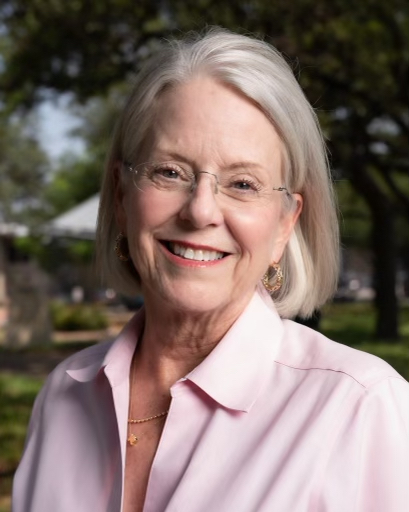
Jul 16, 2024 | Resources, Solar News of Note, Txses Impact
TXSES commissioned a new study quantifying grid-stabilizing value and cost savings of rooftop solar
For Immediate Release: July 16, 2024
Contact: José Medina, jmedina@citizen.org
AUSTIN, Texas—Energy supplied by rooftop solar is much more valuable than the average kilowatt-hour sent to the ERCOT grid by other means, finds a new study commissioned by the Texas Solar Energy Society (TXSES) and released today by the Texans for Local Energy Freedom Coalition.
The study, Value of Residential Solar in Texas, assesses the technology’s benefits to this fast-growing state.
The study shows that the overall value of distributed solar in ERCOT will be about 27¢/kWh, with 15¢/kWh realized in the generation, transmission, and distribution system and 12¢/kWh realized through air pollutant and emission reduction benefits. Rooftop solar is valuable because it mitigates constraints on the generation and transmission system, reduces harmful emissions from air pollutants, and stimulates the economy through local job creation. Further, when paired with energy storage, it can improve grid resiliency and reliability during severe weather events.
The study details how rooftop solar:
- Provides cost-savings to Texans within the ERCOT electric grid, including reducing the need for new costly infrastructure needed to meet electricity demand
- Improves public health by reducing air pollution from combustion-fired electricity generation, and lowering greenhouse gas emissions
- Additional benefits that are real, but not calculated, include job growth, boosts to local economies, alleviating poverty, and energy insecurity
“As Texas grows and the demand for electricity increases, our analysis demonstrates the value that customer-sited solar brings to Texas.” said Anirudh Kshemendranath, a Senior Consultant with Dunsky Energy + Climate Advisors, the firm commissioned by TXSES for the study. “Customer-sited solar has the potential to alleviate grid constraints and reduce costs for all ratepayers and if valued correctly, can be an important tool to support energy reliability and affordability for all Texans.”
Another recent study details how a patchwork of policies at municipal, cooperative and monopoly investor-owned electric utilities across the state chronically undervalues energy sent to the grid from rooftop solar installations. The same is true for competitive retail electric providers in Texas. Without a fair value of solar, homeowners may decide rooftop solar is not worth the investment, or decide against adopting the technology altogether.
“I first installed solar at my home in 2012,” said Larry Howe, a Plano homeowner. “It was a great decision then, but honestly, it’s harder and harder for folks to justify today given how solar policies vary depending on where you live and which utility covers your area. What a homeowner can get back for the electricity they don’t use is a big factor in their decision to make the financial investment in rooftop solar. Homeowners like me need more certainty that solar compensation rates will be fair the day their panels are installed and 10 or 20 years from now.”
As ERCOT faces challenges maintaining reliability and as market prices increase, many Texas utilities and retail electric providers have slashed the rates they pay customers for energy from rooftop solar, and some have adopted additional monthly fees for customers with rooftop solar. These changes provide a financial disincentive for customers considering rooftop solar.
“If state leaders are serious about keeping the grid stable and affordable, it’s time for them to step in and adopt statewide policies to ensure fair compensation for homeowners and businesses that supply energy from solar installations to the distribution grid,” said Alison Silverstein, a former advisor for the Public Utilities Commission of Texas. “This state had a deadly power outage during Winter Storm Uri and several close calls that we will continue to have for the foreseeable future. Rooftop solar is a key part of avoiding an energy crisis. We just need some regulatory certainty coming from Austin.”
In addition to rising demand, Texans have faced increasing costs to power their homes and an electric grid vulnerable to extreme weather events. Winter Storm Uri in February 2021 and the recent Hurricane Beryl left millions without power. The possibility of targeted blackouts has become a yearly occurrence during the summer months of dangerous heat. Supporting rooftop solar can lower some risks and keep Texas powered and running.
###
About the Texans for Local Energy Freedom Coalition
The Coalition was created by a group of non-partisan organizations — Texas Solar Energy Society, Solar United Neighbors and Public Citizen — to explore possible solutions to what utilities need to reimburse rooftop solar owners to offset the cost of solar being fed back into the grid. The discrepancy and unfairness that homeowners are being paid is sending the wrong market signal for homeowners to adopt solar and the possibility of adding storage to their homes. This discourages homeowners and commercial applications when the state needs ALL options and the grid needs power.

Jun 25, 2024 | Txses Impact
TXSES is proud to be one of eight teams that was chosen nationwide for the Solar Energy Innovation Network (SEIN) pilot project, Equitable Solar in Underserved Communities, along with Texas Energy Poverty Research Institute (TEPRI) and Frontier Energy. The white paper, “New Pathways for Equitable Solar Adoption in Texas” describes the project in detail.
SEIN seeks to overcome barriers to solar adoption by connecting teams of stakeholders that are pioneering new ideas with the resources they need to succeed. SEIN is funded by the U.S. Department of Energy Solar Energy Technologies Office and is led by the National Renewable Energy Laboratory (NREL).
Authors: Margo Weisz (TEPRI); Steve Wiese (Frontier Energy), Patrice Parsons (TXSES)
Abstract:
As part of the SEIN Round 3 program, a diverse group of energy stakeholders in Texas set out to develop and pilot new pathways to increase rooftop solar adoption at no upfront cost to low income households. One potentially promising pathway we identified involved combining funding from existing utility and federal programs promoting weatherization and energy efficiency. Our objective was to demonstrate pilot projects that equitably deployed rooftop solar to properties owned or rented by families in disadvantaged communities. Our goal was to create a clear path for low income households to achieve electricity bill relief and to access clean energy by leveraging existing utility energy efficiency programs with existing federal resources, such as the U.S. Department of Health and Human Services (HHS) Low-Income Home Energy Assistance Program (LIHEAP) and/or U.S. Department of Energy (DOE) Weatherization Assistance Program (WAP) funding in Texas. This has been attempted in a few other states with varying degrees of success, but not yet in Texas.
Texas Solar Energy Society (TXSES): Austin Lead
TXSES is a nonprofit, statewide organization that provides education on the critical importance of solar. TXSES advocates for policies that will grow a diverse and equitable solar industry, build healthy and resilient communities, support well-paying jobs, and lay the foundation for a 100% clean energy future.
Role: TXSES coordinated the project in the Austin area and provided educational materials to the stakeholders.
Austin Area Urban League (AAUL)
AAUL is a nonprofit community-based organization that works to build a foundation for social and economic equity and equality. They provide a myriad of services, including weatherization, workforce development, health, and education programs.
Role: AAUL identified households that met both income eligibility and home structure requirements for the rooftop solar funding sources. They are also working with TXSES to provide education to community members about the benefits of solar.
Austin Energy
Austin Energy is the municipally owned electric utility that serves the City of Austin.
Role: Austin Energy is providing funding for the Austin pilot PV systems through its solar rebate program.

Jun 21, 2024 | Txses Impact
Photo by NewSaetiew / Getty Images
Dallas Should Adopt Department of Energy App to Speed Solar Permitting.
TXSES Executive Director Patrice “Pete” Parsons co-wrote this excellent article published in The Dallas Morning News with Ian Seamans of Environment Texas.
Power outages affecting 325,000 people in southeast Texas and 650,000 in North Texas at the end of May were a further reminder, if we needed one, that major changes to our grid are urgently required. More recently, the Electric Reliability Council of Texas said this summer will bring a 16% chance of an electrical grid emergency and a 12% chance of rolling blackouts.
After the winter storm of February 2021, we saw a bump in solar and battery installation, and we’re likely to see an additional bump following the recent storms. Households and businesses across the state are realizing that by going solar they can reduce their electricity bills and increase the reliability of their power supply. According to a recent Environment Texas report, Texas ranks third in the nation for rooftop solar, growing more than 646% from 2017 to 2022.
Even the city of Dallas is getting in on it, with plans to install 739,000 kilowatts of solar capacity by 2030 and 3,695,000 by 2050. And thanks to state and federal incentives — including tens of billions of dollars available from the Inflation Reduction Act — it’s more affordable than ever to make the switch to solar.
But the momentum behind rooftop solar is in danger of getting tangled up in local government red tape. Once families or businesses make the decision to go solar, they often have to navigate a needlessly slow and costly permitting process. Every application to install rooftop solar has to be approved by a city employee, who might have to manually work through 100 compliance checks and get approval from structural, electrical, fire, planning and zoning departments.
According to the National Renewable Energy Laboratory’s SolarTRACE database, in 2022 it took an average of 22 days to obtain a residential rooftop solar permit from the city of Dallas, while Fort Worth took 4 days and the average Frisco permit was approved within 24 hours.
We spoke to local solar installers from Texas Best Solar, Hoss Solar and Solar Cowboys, who said that recent Dallas applications took between two weeks and, in one case, 52 days. A major city like ours can do a lot better.
In order for Dallas to meet the solar goals in its Climate Action Plan, we need a permitting process that can scale to meet the increasing number of applications in a timely and efficient manner, without compromising on safety and other necessary checks. Thankfully, there’s a tried and tested app for that. SolarAPP+, developed by the U.S. Department of Energy, is a free web-based portal which automates permitting in a quick, reliable process.
Hundreds of cities are already successfully using SolarAPP+ to quickly and smoothly allow residents to install reliable rooftop solar energy and the lower bills that come with it. Houston and San Antonio are already piloting the service. The National Renewable Energy Laboratory estimates that in those areas where it is being used, SolarAPP+ saved around 15,400 hours of local government staff time in 2023, and sped up the permitting process by an average of 14.5 days.
In December of last year, Dallas’ Environmental Commission voted unanimously to recommend that the city’s permitting department adopt SolarAPP+.
With the city’s bold climate goals, ongoing struggles with air pollution, and the public clamoring for clean energy, the next step is clear: We need more solar and less red tape.
In the coming years, the majority of Dallas homes and businesses could be generating their own reliable, clean, affordable energy, directly from their rooftops. They could break free from reliance on utility companies and polluting power plants located miles away. But to build the clean, reliable power grid of the future, we need to act quickly to change our approach to permitting.
Patrice “Pete” Parsons is the executive director of the Texas Solar Energy Society. Ian Seamans is the Dallas City Hall advocate for Environment Texas.
May 23, 2024 | Txses Impact
by Patrice ‘Pete’ Parsons, TXSES Executive Director
Misinformation and disinformation are at all-time highs in recent years, not only in politics, but also when it comes to protecting our environment and improving the use of our resources.
Although a Pew Research Center survey found last June that “67% of U.S. adults prioritize the development of alternative energy sources such as wind, solar and hydrogen power over increasing the production of fossil fuel energy sources,” these positive thoughts can be quickly undermined when false narratives enter the picture, as highlighted in Solar Today‘s article last month, It’s Time to Stand up for Solar.
Much of the disinformation on renewables originates from “deliberately misleading sources,” such as bogus so-called “local” organizations, ultimately funded by those in the fossil fuel industry, according to a recent report from Columbia Law School’s Sabin Center for Climate Change Law, “Rebutting 33 False Claims About Solar, Wind, and Electric Vehicles.” The report looked at the 14 most commonly circulated false claims and refuted them with the goal of providing correct information to communities.
Since going into all of them would create an exceptionally long article, I have pulled a few of the most outrageous ones mentioned in the report, with the Center’s debunked responses.
False Claim #1: Electromagnetic fields from solar farms are harmful to human health.
Multiple studies have shown that electromagnetic fields (EMFs) created on solar farms are not harmful to humans and in fact are “similar in strength and frequency to those of toaster ovens and other household appliances.” The highest emissions of EMFs on solar farms come from inverters, and “even when standing next to the very largest inverter at a utility-scale solar farm, one’s exposure level (up to 1,050 milligauss, or mG) is less than one’s exposure level while operating an electric can opener (up to 1,500 mG), and well within accepted exposure limits (up to 2,000 mG).”
False Claim #2: Toxic heavy metals, such as lead and cadmium, leach out from solar panels and pose a threat to human health.
The cadmium sometimes found in solar panels (used in about 40% of new panels in the U.S. and 5% of new panels in the world) is actually cadmium telluride—a non-volatile, non-water-soluble material with “1/100th the toxicity of free cadmium,” which is encapsulated in the panel.
Small amounts of lead can be found in most solar panels, as it is in many electronics. According to the Massachusetts Department of Energy Resources (DER), however, “because PV panel materials are enclosed, and don’t mix with water or vaporize into the air, there is little, if any, risk of chemical releases to the environment during normal use.” They further found that “even in the unlikely event of panel breakage, releases of chemicals used in solar panels are ‘not a concern.’” The study points out that all materials in the panel are “encased in tempered glass that not only withstands high temperatures… (and are) also strong enough to pass hail tests and is regularly installed in Arctic and Antarctic conditions.” Even if one were to catch fire at temperatures hot enough to melt glass, it would still remain encased in the melted glass.
False Claim #4: Clearing trees for solar panels negates any climate change benefits.
It turns out that this is not a big issue in the U.S., as only about 4% of solar projects are being developed on forested lands here, but the report found that “an acre of solar panels in the United States usually offsets significantly more carbon dioxide emissions than an acre of planted trees can sequester.” According to the EPA’s Greenhouse Gas Equivalencies Calculator, an average acre of U.S. forest sequesters 0.857 metric tons of carbon dioxide annually. Based on the amount of emissions the average acre of solar panels displaces from natural gas-fired power plant use, they would end up reducing approximately 204–231 times more carbon dioxide per year than an acre of forest.
False Claim #5: Solar energy is worse for the climate than burning fossil fuels.
Overwhelming evidence shows that “the lifecycle emissions of solar energy are far lower than those of all fossil fuel sources, including natural gas,” according to the report. “On average, it takes only three years after installation for a solar panel to offset emissions from its production and transportation. Modern solar panels have a functional lifecycle of 30–35 years, allowing more than enough time to achieve carbon neutrality and generate new emissions-free energy.”
False Claim #10: Utility-scale solar farms destroy the value of nearby homes.
Multiple studies have shown that solar farms typically have nominal impact on the value of the homes closest to it. The report cites the largest study to date, covering six states and 1.8 million homes, which found that homes “within 0.5 miles of solar farms were found to experience price reductions of 1.5%, compared to those 2–4 miles away… and homes located more than 1 mile from a solar farm had no statistically significant price difference.” Other studies found no impact on homes in rural areas, as opposed to those with a slight difference in suburban areas, where space is more competitive.
False Claim #11: Solar energy is more expensive than fossil fuels and completely dependent on subsidies.
The report shares that “unsubsidized solar energy is now generally cheaper than fossil fuels” and that according to the International Energy Agency, photovoltaic solar power is “the cheapest source of new electricity generation in most parts of the world,” and “now the cheapest source of electricity in history” for projects with low-cost financing that tap high quality resources.”
They also note that fossil fuels continue to receive subsidies—$2.1 billion in 2022—although that is now less than renewable energy receives.
False Claim #12: Solar panels don’t work in cold or cloudy climates.
Although clouds can reduce solar power by up to 45%, solar panels do continue to generate energy. Cold temperatures do not affect output at all, however, and actually “increase solar panel efficiency by increasing voltage.”
Apr 20, 2024 | Txses Impact, Chair's Corner
by Patrice ‘Pete’ Parsons, TXSES Executive Director
You’ve probably seen the headlines this past week from ERCOT (Electric Reliability Council of Texas), including:
It all comes down to a very simply concept — Supply and Demand.
When considering the problems ERCOT is having in trying to meet the growing demand for energy, it is time they took into consideration all possibilities. This includes not only demand, but all the options for supply.
Investors are developing solar power and storage at an unprecedented rate and the costs have dropped to the point that the technology is cheaper than coal as well as natural gas (see “Texas solar surpasses coal production for first time”). But intense demand could overwhelm all that new supply, and then some.
Demand hit 85 gigawatts last summer and ERCOT recently estimated that Texans would need 92 gigawatts of electricity to weather another Winter Storm Uri.
With an expected flood of demand from large loads, including data centers, electric vehicle fleets and much, much more coming online in Texas, demand will rise even higher and faster.
Without higher demand flexibility, the grid simply will not be able to keep up and Texans will face higher electricity bills and more blackouts.
If investor-owned utilities would take advantage of all the options available, including energy efficiency, demand response and incentivizing rooftop solar it would cost much less than new power plants needed to meet the demand that we will be facing. It would make the grid stronger and save Texans money.
Last year the legislature required the Public Utility Commission of Texas to pass a rule to reduce average residential load, but so far the PUC has ignored this legislative requirement, although they did recently hire a new director of energy efficiency. So, there is hope.
If we try to keep up by just building enough infrastructure, and dispatchable generation from gas plants to simultaneously cover peak electricity needs without considering the exploding demand, the grid will be one of the most expensive and least reliable in the world.
The good news could come from distributed solar power. Distributed solar’s ability to increase customer resiliency and predictability against the expected rise in the cost of electricity, will be vital as the state moves forward. And if storage is added, that reliability will increase several fold.




